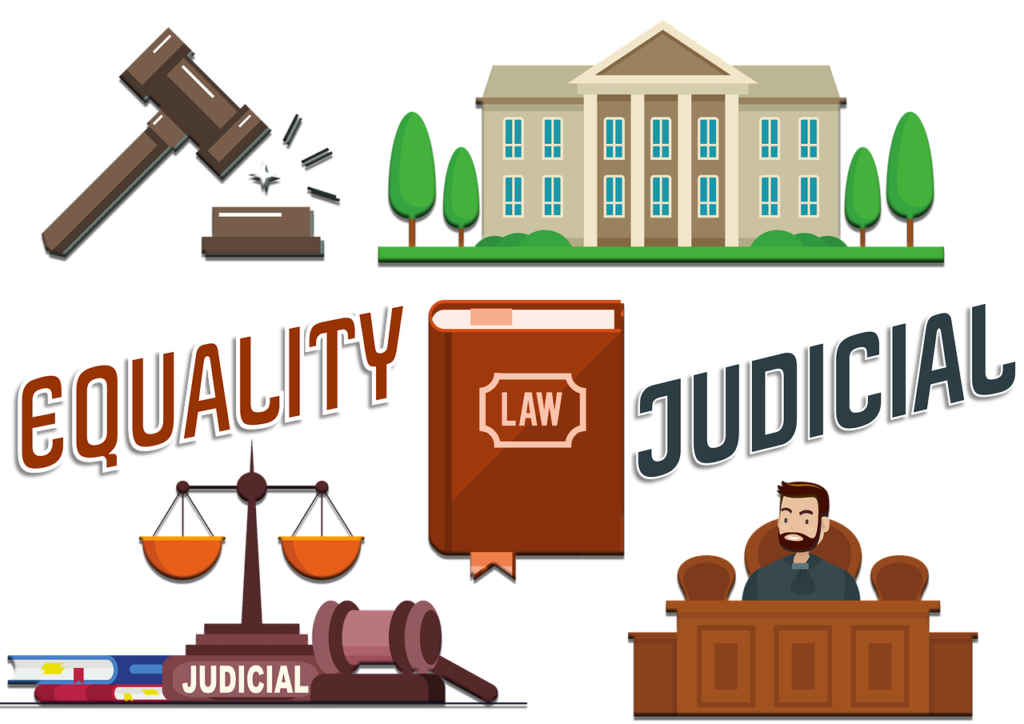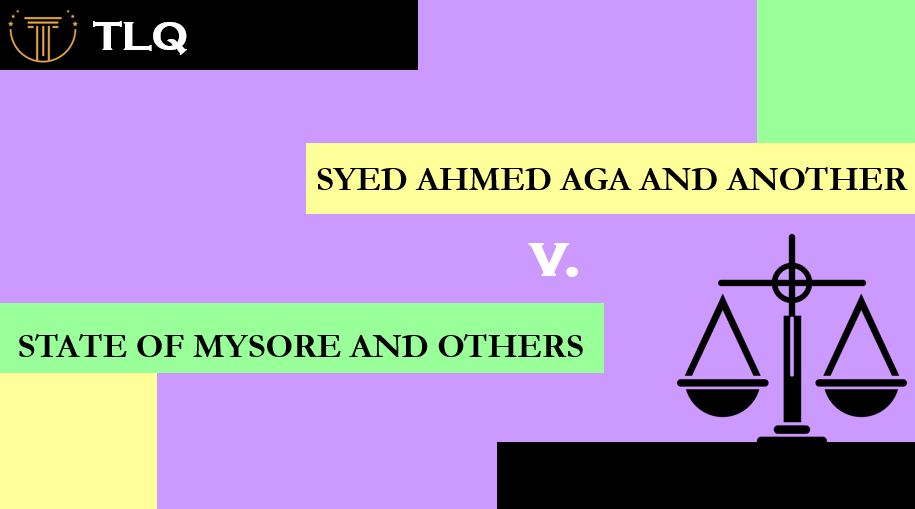Published On: 17th March, 2024
Introduction
The Indian legal system is among the oldest in the world, a fact that is accepted. However, it is also widely known that the Indian legal system is growing less successful at resolving pending issues, since Indian courts are constantly filled with lengthy cases that have not yet been resolved. The situation is that pending cases continue to grow, so even with the establishment of more than one thousand fast courts that have already resolved millions of cases, the issue is far away from being solved.[1]
The largest issue the judiciary is undoubtedly dealing with in the twenty-first century is the waiting list of cases that delay justice delivery. For an average population of ten lakhs, there are about twenty judges, which is a small number. Therefore, to address this massive waiting list of cases, the judiciary started transferring its authority to quasi-judicial entities like consumer dispute resolution commissions, human rights commissions, and other tribunals. In addition to establishing these quasi-judicial entities, the judiciary has created a different dispute-resolution mechanism.
Alternative Dispute Resolution (ADR), which settles disputes peacefully and produces a solution acceptable to all sides, might be a useful tool in managing a situation like this.
Alternative Dispute Resolution
“Alternative dispute resolution” refers to a range of extrajudicial dispute settlement practices. These include mini-trials, quick jury trials, arbitration, conciliation, mediation, negotiation, confidential judging, and mediated settlement meetings. The method used for resolving disputes without going to court is called alternative dispute resolution (ADR), including negotiation, mediation, and arbitration. ADR procedures are typically faster and less expensive. They are being used more in issues that would normally end up in court, such as well-known labor disputes, divorce cases, and personal injury cases. One of the main reasons why parties might prefer alternative dispute resolution (ADR) over conflicting litigation is that ADR methods are typically cooperative and allow the parties to understand the views of one another. ADR also allows the parties to present better outcomes that a bench might not be legally allowed to impose.[2]
ADR is an adversarial method of resolving disputes that involves working together and cooperatively to achieve the best result for all parties. ADR can play a significant role in reducing the trial load on judges while creating a satisfying and balanced atmosphere for all parties.
HISTORY
Weak provisions prevented the very first Arbitration Act of 1940 from being completely implemented in India. Afterward, the UNCITRAL Model Agreement and the Arbitration, Conciliation, and Mediation Act of 1996 were passed, which promoted the development of mediation, arbitration, and other forms of alternative dispute resolution.
As business sectors developed rapidly and the overburdened courts began to process cases carefully, alternative dispute resolution began to make progress. ADR gained momentum in Indian business activities through national and international proposals. Arbitration emerged as one of the most widely used forms of alternative dispute resolution (ADR) since it was a positive effect alternative to all other methods now in use.[3]
What led to the beginning of the idea of alternative dispute resolution?
Many people continue to live in poverty in developing nations like India. Sometimes, individuals lack the financial means to engage in lengthy legal proceedings when their rights are violated. They lack the cash they need to hire a lawyer. They are unaware of the judicial system and its rules and regulations. As a result, individuals frequently consider the legal system to be difficult.[4]
Many nations share the same causes of these inefficiencies, and that is the reason ADR is being examined. The courts are heavily burdened by the excessive number of ongoing cases, many of which have dragged on for decades.
For these reasons, the Indian government implemented the U.N. Committee on International Trade Law’s (UNCITRAL) recommendations, replacing the old Arbitration Act of 1940. alongside the Conciliation and Arbitration Act of 1996 and enacting the aforementioned section of the Code of the Civil Procedure, as amended, 1908.
ADR’s Relevance in India
Through its various approaches, ADR plays a significant role in India in addressing the situation of pending cases in Indian courts. The Alternative dispute resolution method provides the Indian bench with highly improved methods, hence reducing the workload on the courts. ADR provides many facets of settlement, such as negotiation, mediation, conciliation, arbitration, and Lok Adalat. Although there is no legal recognition for negotiation in India, it refers to the process of the parties working together to resolve their conflicts by self-counseling.
Articles 14 and 21, which deal with equality before the law and a person’s right to life and liberty, respectively, are also the foundation of alternative dispute resolution (ADR).
ADR’s motive is to offer social-economic plus political justice and maintain honesty in society as established in the preamble. Equal justice and free legal assistance are further goals of ADR, which is conducted by DPSP, article 39-A.
Important Provisions regarding ADR
People can receive this remedy under the provisions of section 89 in the Civil Procedure Code of 1908; if the court finds the aspects of a settlement that can be reached without going to court, it will recommend conditions for an acceptable agreement and apply them to arbitration, conciliation, mediation, or Lok Adalat.
The 1996 Act on Arbitration and Conciliation and the 1987 Legal Services Authority Act are the two acts that address alternative dispute resolution.
Different Alternative Dispute Resolution Methods
Arbitration
In arbitration, both parties agree to have a third, unbiased party—the arbitrator—resolve the confusion; the parties are then compelled to follow the arbitrator’s judgment. By arbitration, disputing parties choose to resolve their conflicts through communication with a third party that is unbiased instead of going to court. Court regulation and legal bindingness are features of the arbitrator’s rulings. The rights to examine and appeal arbitration rulings are limited by Indian law.[5]
Mediation
A private and informal means of solving conflicts is mediation. The parties in conflict approach a neutral party, who uses certain negotiation and interaction strategies to help them solve their disagreement amicably. The mediator merely serves as a guide; the parties manage the mediation process. The mediator acts with fairness and avoids imposing his own opinions or choices. To avoid going to court, which is costly and time-consuming, mediation’s primary goal is to offer the parties the chance to discuss and think about possibilities for resolving their conflicts peacefully, quickly, and economically.
Conciliation
When it comes to resolving conflicts, conciliation is more informal than arbitration and mediation. In conciliation, a third party who is unbiased meets with the parties in conflict and helps them communicate to resolve their differences. The Act on Arbitration and Conciliation of 1996, Section 61, allows the settlement of disagreements arising from legal relations, whether they are legal or not, as well as all related processes. There can be no objection to its enactment if it prevents the parties from reaching a conciliation agreement for the resolution of even future problems.
Lok Adalat
Implementing the provisions of Article 39-A within the DPSP, which requires the state to work towards improving equal justice and offering free legal help to the poor, was the primary goal behind the creation of Lok Adalat. A forum called Lok Adalat is used for the peaceful compromise or settlement of court issues that are either pending or in the pre-litigation stage. The Lok Adalat system is a means of providing informal, affordable, and quick justice to the general public. It does this by resolving conflicts through a variety of methods, including mediation, negotiation, and taking a respectful approach to the issues with the help of experienced and highly skilled members.
The High Court of Delhi issued an order for the establishment of permanent Lok Adalats in the matter of Abul Hasan and the National Legal Service Authority versus Delhi Vidyut Board & Ors[6]. Also, Lok Adalat’s decision is valid under law and will be considered similarly to a civil court’s decision, improving the accessibility of justice for the underprivileged.
Negotiation
Negotiation is another alternative resolution of conflict strategy. Because it includes both parties freely negotiating between themselves instead of involving a third party, it can be said to be the foundation of all other processes. There is no official acknowledgment of bargaining anywhere in India. To resolve a dispute, the parties engage in self-consultation through negotiation. The technique of negotiation follows a constant pattern but without clear guidelines.
Positives and negatives of ADR
Positive aspects of ADR
- It is less costly.
- It requires less time.
- It is free of the legal language difficulties observed in a judicial system.
- Both parties are permitted to express different opinions and to communicate with one another about them without thinking that this information may be disclosed in the courts.
- Since there is no winning or losing side, there is no rivalry between the parties.
- The ADR approach to be used is frequently up to the parties to decide. In the event, they may decide which person or group will resolve the conflict.
- Additionally, the method is highly flexible to the needs of each of the parties involved.
- Privacy is another option available to the parties.
Negative aspects of ADR
- When a conflict needs to be solved by a precedent, ADR is not effective.
- ADR might not be helpful in situations when court rulings and temporary orders are required.
- In situations where punishment is required, ADR is less effective.
- ADR might not be helpful in cases where specialized evidence and analysis are necessary.
- ADR would not be useful if there was an unfair advantage between both sides.
- In difficult cases, the deciding body may require the help of experts to look into small aspects and provide suggestions. ADR is unlikely to work here.
Few Case Laws Concerning Alternative Dispute Resolution
- It was ruled in the Emkay Global Financial Services Ltd versus Giridhar Sondhi[7] case that the Arbitration Act attempts to end conflicts quickly.
- In the matter of Kinnari Mallick and Others versus Ghansyam Das Damani[8], the Supreme Court ruled that the power of a court is restricted and that it lacks the authority to hear a petition within the provisions of section 34 under the Act on Arbitration and Conciliation of 1996. This authority may be used with one party’s permission before reversing a decision.
- The place of proceedings was questioned in the Supreme Court’s landmark verdict. In the Brahmani River Pellets Ltd versus Kamachi Industries Ltd[9] case, the court’s decision stated that when parties select a place for legal authority, all other courts are rejected. All other courts’ district is expressly denied when parties declare in the agreement expressly where arbitration will take place.
- It was decided in Konkan Railway Corporation versus Rani Construction Pvt. Ltd[10] that the court should help the parties in finding an arbitrator instead of determining whether the arbitration provision was legal.
- S.B.P and Co versus Patel Engineering Ltd.[11] It was decided that the chief justice’s judiciary authority includes the appointment of an arbitrator.
- In Vinod Bhaiyalal Jain versus Wadhwani Parmeshwari cold-storage Private. Company., Ltd[12]., the Supreme Court ruled that arbitrators should be unbiased and give the parties fair and just compensation.
Conclusion
Other dispute-resolution options include summary jury trials, mini-trials, med-arb, and others. But in India, the most often utilized ADR methods include mediation, arbitration, Lok Adalats, etc. ADR has been becoming the lead preferred choice for parties all around the world, although India still uses a lot of courts. Nonetheless, ADR is now viewed as essential to increase access to justice and with the advancement of these ADR techniques. All forms of alternative dispute resolution, including negotiation, should be recognized by law since they are practical and efficient and can reduce the workload for the courts.
Reference(s):
[1] Rishabh Saxena, ‘ All You Need to Know About Alternative Dispute Resolution (ADR)’ (9 May 2017) < https://blog.ipleaders.in/adr-alternative-dispute-resolution/ > accessed 2 February 2024
[2] Afreen Manzoor, ‘ADR: Concept and Need’ ( 15 June 2022) < https://lawbhoomi.com/adr-concept-and-need/ > accessed 2 February 2024
[3] Archana Mohanty, ‘Judicial precedents of ADR in India’ < https://www.legalserviceindia.com/legal/article-6963-judicial-precedents-of-adr-in-india.html > accessed 3 February 2024
[4] Ishaan Banerjee, ‘An Introduction to Alternative Dispute Resolution’ ( 2 March 2020) <https://blog.ipleaders.in/an-introduction-to-alternative-dispute-resolution/#How_did_the_concept_of_ADR_arise > accessed 3 February 2024
[5] Bhupender Tanwar, ‘All you need to know about Alternative Dispute Resolution’ ( 12 June 2020) < https://www.lawtendo.com/blogs/all-you-need-to-know-about-alternative-dispute-resolution > accessed on 4 February 2024
[6] Abul Hasan and the National Legal Service Authority vs Delhi Vidyut Board and Ors. (1999) AIR DELHI 88
[7] M/S Emkay Global Financial Service Ltd. Vs Girdhar Sondhi (2018) 9 SCC 49
[8] Kinnari Mallick and Anr. vs Ghanshyam Das Damani (2018) 11 SCC 328
[9] Brahmani River Pellets Ltd vs Kamachi Industries Ltd (2019) AIR SUPREME COURT 3658
[10] Konkan Railway Corporation vs Rani Construction Pvt Ltd (2002) AIR SCW 426
[11] SBP and Co vs Patel Engineering Ltd and another (2006) AIR SC 450
[12] Vinod Bhaiyalal Jain vs Wadhwani Parameshwari cold-storage Private Company Ltd (2019) AIR SC (CIV) 2360




